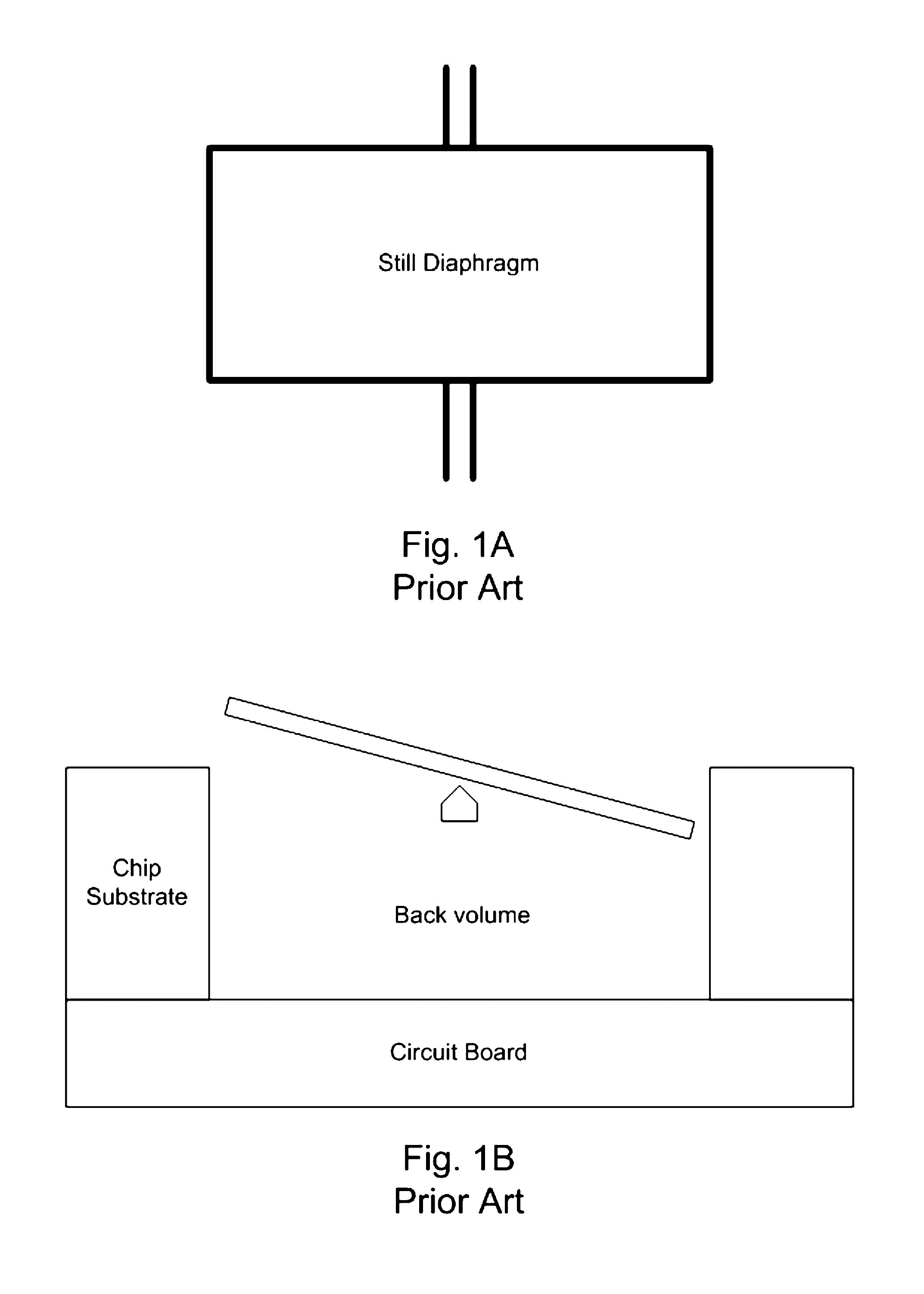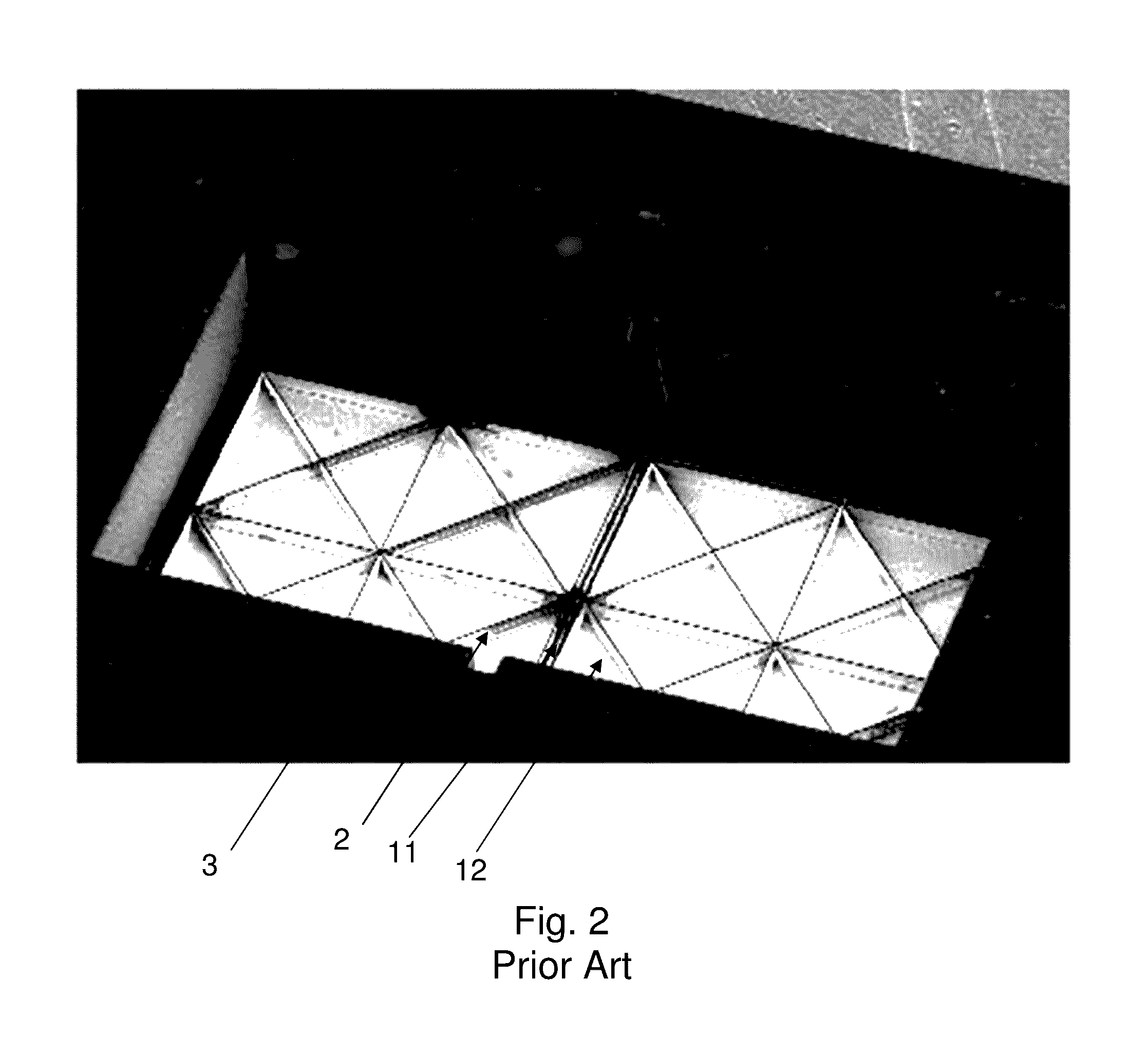Hinged MEMS diaphragm
a mems diaphragm and hinge technology, applied in the direction of loudspeakers, electrical transducers, coatings, etc., can solve the problems of hampered creation and manufacture of a number of important microdevices, adversely affecting fabrication yield, etc., and achieve the effect of avoiding stress on the fragile portion
- Summary
- Abstract
- Description
- Claims
- Application Information
AI Technical Summary
Benefits of technology
Problems solved by technology
Method used
Image
Examples
Embodiment Construction
[0077]According to one embodiment of the technology, a 1 mm×2 mm microphone diaphragm is made of polysilicon and has stiffeners and carefully designed hinge supports to ensure that it responds like a rigid body on flexible hinges. Larger microphone diaphragms, e.g., 1 mm×3 mm are also possible. The diaphragm is designed to respond to pressure gradients, e.g., due to acoustic waves in air, giving it a first-order directional response to incident sound. Both the diaphragm and stiffening ribs are made of LPCVD (low pressure chemical vapor deposition) polysilicon. The diaphragm is about 2 μm thick and the stiffening ribs are 4 μm wide and 40 μm tall. This structure provides a highly compliant differential microphone that responds to the differences in pressure on the two sides of the diaphragm that are separated by the hinges at the center [4, 20-22]. Interdigitated fingers, which consist of 100 μm long, 1.5 μm wide fingers with 6 μm periodicity, are incorporated at the perimeter of the...
PUM
 Login to View More
Login to View More Abstract
Description
Claims
Application Information
 Login to View More
Login to View More - R&D
- Intellectual Property
- Life Sciences
- Materials
- Tech Scout
- Unparalleled Data Quality
- Higher Quality Content
- 60% Fewer Hallucinations
Browse by: Latest US Patents, China's latest patents, Technical Efficacy Thesaurus, Application Domain, Technology Topic, Popular Technical Reports.
© 2025 PatSnap. All rights reserved.Legal|Privacy policy|Modern Slavery Act Transparency Statement|Sitemap|About US| Contact US: help@patsnap.com



